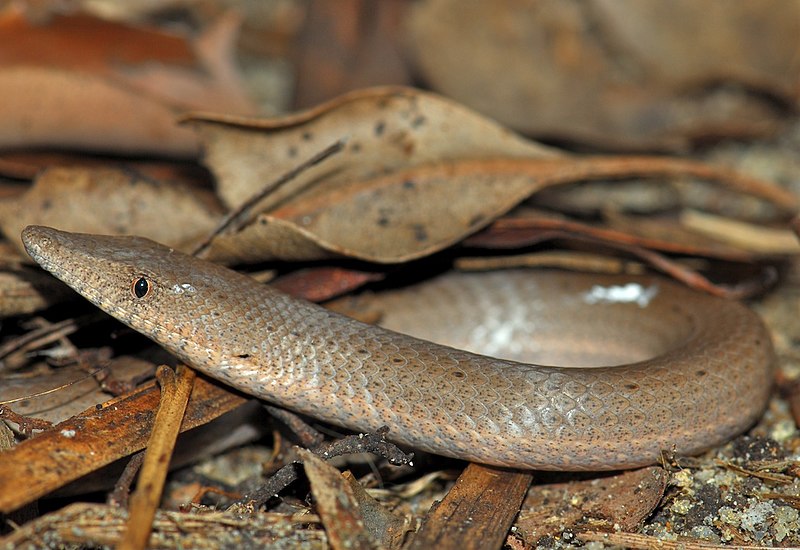 While working at the Bronx Zoo some years ago, I was delighted to receive a surprise shipment of New Guinea Snake Lizards (Lialis jicari). Also known as the Long Headed Scaly-foot or Flap-Footed Lizard, it and the related Burton’s Snake Lizard (Lialis bertoni) have long fascinated herpetologists and hobbyists alike. As you’ll see below, their similarity to snakes goes way beyond a limbless body; indeed, many consider the Snake Lizards to be an example of convergent evolution (unrelated species evolving similar characteristics). Today I’d like to summarize my experiences and some of what is known about these amazing, little-studied creatures.
While working at the Bronx Zoo some years ago, I was delighted to receive a surprise shipment of New Guinea Snake Lizards (Lialis jicari). Also known as the Long Headed Scaly-foot or Flap-Footed Lizard, it and the related Burton’s Snake Lizard (Lialis bertoni) have long fascinated herpetologists and hobbyists alike. As you’ll see below, their similarity to snakes goes way beyond a limbless body; indeed, many consider the Snake Lizards to be an example of convergent evolution (unrelated species evolving similar characteristics). Today I’d like to summarize my experiences and some of what is known about these amazing, little-studied creatures.
Classification
The 2 species mentioned above are the sole members of the genus Lialis. They are classified in the family Pygopodidae, along with approximately 38 other legless relatives. Their distribution is limited to Australia, New Guinea, and some nearby islands.
Snake Lizards have been described by one taxonomist as “legless geckos”, and appear most closely related to that group. Actually, Snake Lizards do sport remnants of their rear legs, which appear as small skin flaps (hence the name “Flap-Footed Lizard”). Read More »
 That Reptile Blog – Reptile, Amphibian and Exotic Pet Care and Information
That Reptile Blog – Reptile, Amphibian and Exotic Pet Care and Information
